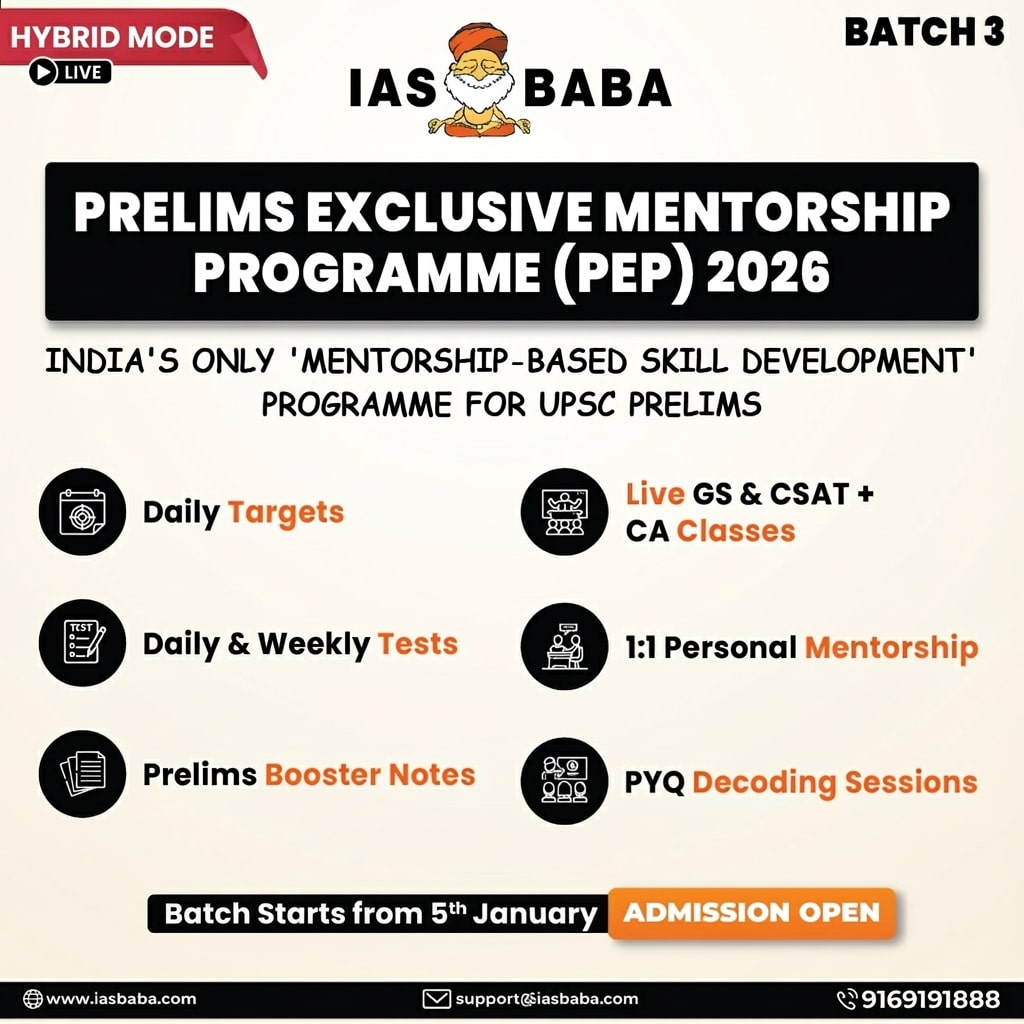Indian Economy, TLP-UPSC Mains Answer Writing
Q. 3. Disaster preparedness is the first step in any disaster management process. Explain how hazard zonation mapping will help in disaster mitigation in the case of floods. (150 words, 10 marks)
Introduction
Disaster preparedness, the first phase of the UNDRR disaster management cycle, focuses on reducing impact before disasters strike. As per the Sendai Framework and India’s 2009 DM Policy, preparedness is critical to flood mitigation.
Body
Why Preparedness Is the First Step
- Risk Awareness and Education: Pre-disaster campaigns, school drills, and local training boost readiness. Example: Coastal villages in Odisha conduct mock drills under the GoI-UNDP Disaster Risk Reduction Programme.
- Infrastructure and Resource Prepositioning: Boats, shelters, food, and medicines are stocked in high-risk zones pre-monsoon. Example: Assam and Bihar use prepositioning strategies in flood-prone blocks.
- Evacuation Planning: Includes hazard route mapping, identification of vulnerable populations, and shelter designation. Mandated under NDMA’s Flood Management Guidelines (2008).
- Forecasting and Early Warning Systems: Real-time alerts from IMD and CWC aid in timely evacuation. Example: India’s Flood Forecasting Network covers over 330 stations.
- Institutional Capacity Building: Training SDRFs, panchayats, and local bodies improves coordinated response. Example: The National DM Plan (2019) emphasizes multi-tier capacity development.
- Hazard Zonation Mapping: Hazard zonation mapping classifies areas based on flood risk using hydrological data, satellite imagery, and GIS (NRSC, CWC). Example: The National Flood Hazard Atlas maps all flood-prone districts in India.
How It Helps in Floods
- Guided Land Use Planning: Prevents construction in low-lying floodplains and preserves buffer zones. Example: Post-2015 Chennai floods, urban land-use plans were revised.
- Targeted Infrastructure Design: Facilitates flood-resilient structures such as stilt houses and elevated roads. Example: Stilted buildings in Assam’s Kaziranga region follow zonation inputs.
- Efficient Resource Allocation: Prioritizes SDRF, boats, and relief camp deployment based on flood-prone zones. Example: Assam’s district-wise flood preparedness plans use zonation maps.
- Insurance and Risk Transfer Mechanisms: Zonation helps assess flood risk and set premiums for insured assets. Example: Crop risk assessments under PMFBY rely on flood hazard data.
- Data-Driven Community Preparedness: Empowers local bodies to organize drills and public safety campaigns. Example: Kuttanad basin in Kerala uses zonation for community response planning.
Steps Taken by the Government
- National Flood Hazard Atlas (NRSC): Uses satellite data to map historical flood frequency across India.
- Urban Flood Management Guidelines (NDMA, 2010): Mandate hazard mapping integration in urban drainage and city planning.
- Real-Time Flood Forecasting (CWC + IMD): Over 330 telemetry-based stations issue flood alerts nationwide.
- Amrit Sarovar Mission (2022): Aims to rejuvenate water bodies to reduce surface runoff in flood-prone areas.
Way Forward
- Implement Mihir Shah Committee Recommendations: Suggests integrating river basin planning with flood hazard mapping for sustainable water and disaster governance.
- Digital Elevation Mapping (ISRO + NRSC): Accelerate use of high-resolution satellite imagery and LIDAR-based elevation models to improve micro-zonation of flood risks.
- Deploy IFLOWS/CFLOWS Systems: Expand AI-based flood forecasting models like Mumbai’s IFLOWS and Chennai’s CFLOWS to other urban flood hotspots.
- Adopt Sponge City Principles: Learn from China’s model by integrating permeable pavements, urban wetlands, and rain gardens to absorb excess water.
Conclusion
Preparedness, aligned with the Sendai Framework, ensures resilience through early warning and hazard mapping. Zonation-integrated planning is key to meeting India’s sustainable disaster risk reduction and climate adaptation goals.














